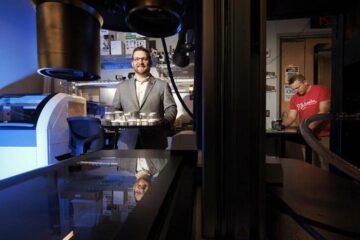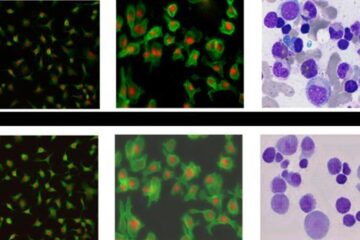‘Plants for the future’: a 2025 vision for European plant biotechnology

As the world’s population will grow from 6 to 9 billion over the next 50 years, and fossil resources will diminish, the need for food, “bio-fuels” and “bio-materials” from renewable, plant-based resources will increase. A report presented in Brussels today highlights how advances in plant genomics and biotechnology can help Europe to address these challenges, for instance with stress-resistant plants. Leading representatives from research, the food and biotech industry, the farming community and consumers’ organisations presented to European Research Commissioner Philippe Busquin a long-term vision for European plant biotechnology towards 2025. The paper identifies three priorities: to produce more affordable, healthy and better quality food products; encourage environmental and agricultural sustainability; and enhance competitiveness in European agriculture, industry and forestry. Stakeholders and policymakers will participate in the new technology platform on plant biotechnology to deliver a strategic research agenda by the end of the year.
“Despite Europe having been at the forefront of plant science and biotechnology, its leading position has drastically deteriorated in recent years, due to public concerns over the impact of these technologies, insufficient communication of the benefits of this technology to the public, and lack of strategic research programmes as compared to our competitors,” said Philippe Busquin. “This is alarming in view of the challenges Europe is facing: providing a growing world population with more healthy foodstuffs in a sustainable way and replacing fossil-based materials with new, environmentally sound bio-materials made from renewable plant resources”.
Lagging behind
While US biotech firms spend €650 million a year on R&D, their EU counterparts invest only €400 million. Last year, the American government launched a National Plant Genome Initiative with a total budget of €1.1 billion from 2003 to 2008. EU15 support is estimated to be around €80 million annually.
Towards a sustainable bio-economy
Agricultural production accounts for 17 million farms in Europe and 8% of the EU-25 workforce, while the agro-food industry has a €600 billion annual turnover. The vision paper highlights the role biotechnology and genomics can play in helping the EU move to a knowledge based bio-economy that uses renewable plant resources.
New stress-resistant plants will be capable of increased agricultural productivity, despite increased seasonal instabilities and climate change, while also requiring less fertiliser, pesticide and water. The research agenda can also increase genetic diversity of plant crops, and boost the development of “green” materials, including bio-fuels.
The vision
The vision paper calls for a European technology platform on plant biotechnology research aimed at:
· Developing a strategic research agenda covering genomics, physiology, agronomy, ecology, bioinformatics and other emerging skills
· Boosting public and private R&D investment and enhancing research transparency
· Strengthening industry support for the platform’s research agenda
· Promoting societal consensus through mutual understanding and communication
Media Contact
All latest news from the category: Life Sciences and Chemistry
Articles and reports from the Life Sciences and chemistry area deal with applied and basic research into modern biology, chemistry and human medicine.
Valuable information can be found on a range of life sciences fields including bacteriology, biochemistry, bionics, bioinformatics, biophysics, biotechnology, genetics, geobotany, human biology, marine biology, microbiology, molecular biology, cellular biology, zoology, bioinorganic chemistry, microchemistry and environmental chemistry.
Newest articles

Bringing bio-inspired robots to life
Nebraska researcher Eric Markvicka gets NSF CAREER Award to pursue manufacture of novel materials for soft robotics and stretchable electronics. Engineers are increasingly eager to develop robots that mimic the…

Bella moths use poison to attract mates
Scientists are closer to finding out how. Pyrrolizidine alkaloids are as bitter and toxic as they are hard to pronounce. They’re produced by several different types of plants and are…

AI tool creates ‘synthetic’ images of cells
…for enhanced microscopy analysis. Observing individual cells through microscopes can reveal a range of important cell biological phenomena that frequently play a role in human diseases, but the process of…





















